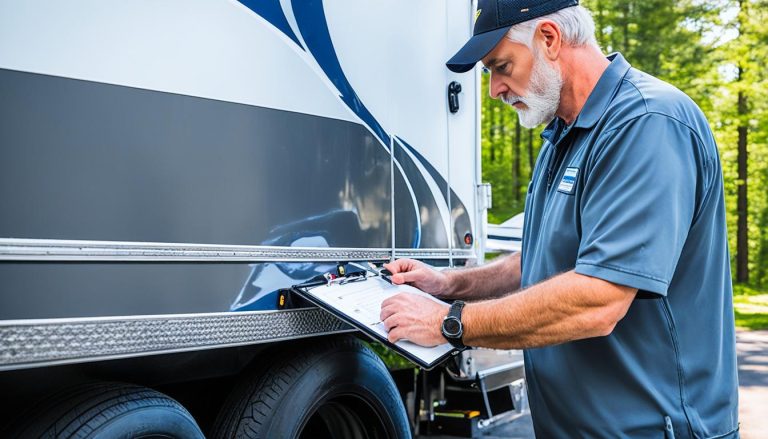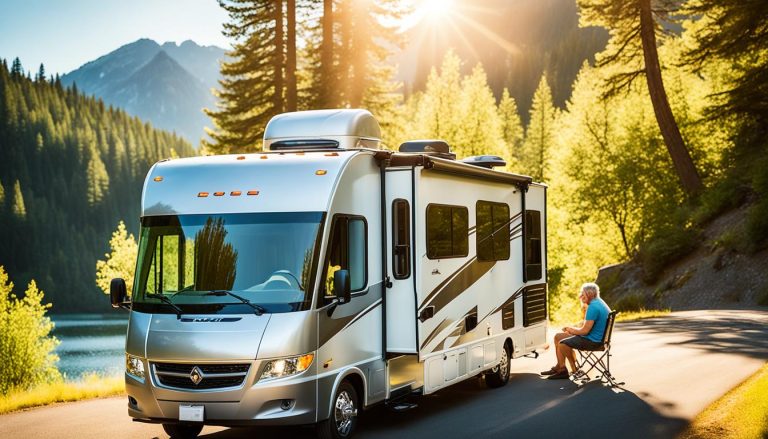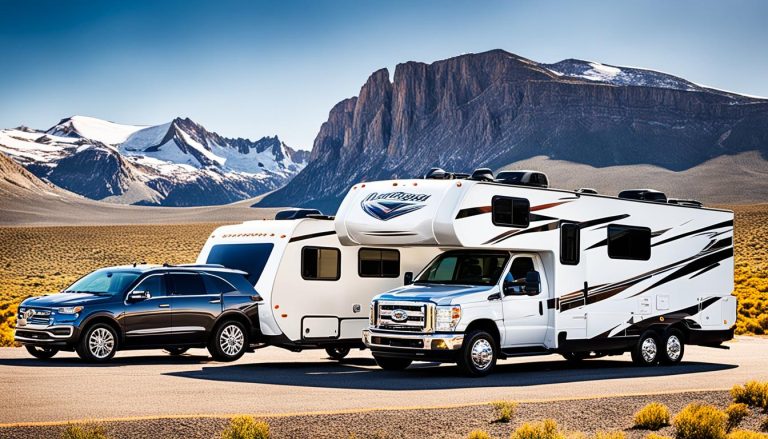Explore Trailer Hitch Classes Explained
gorvlifestyle.com and its partners may earn a commission if you purchase a product through one of our links
When it comes to towing, the foundational step is understanding the different trailer hitch classes. Each class is tailored to handle various weights and sizes, which is vital for ensuring safety on the road. Whether one is planning to haul a simple bike rack or a hefty camper, there’s a hitch class designed to meet those specific needs. This guide to trailer hitch classes will clarify what the classes of trailer hitches are and what each one is capable of, ensuring drivers can hitch up with confidence and ease.
Key Takeaways
- Different trailer hitch classes are designed to match specific towing weights and vehicle types.
- Selecting the correct trailer hitch class is imperative for safe and efficient towing.
- Towing capacity and hitch size play a crucial role in deciding the right class for your vehicle.
- The five main classes range from Class 1, suitable for light-duty towing, to Class 5 for heavy-duty tasks.
- Understanding your vehicle’s towing specifications is essential in choosing the appropriate hitch class.
Understanding the Basics of Trailer Hitches
Embarking on a journey that involves towing requires a secure connection between a vehicle and trailer. This is where understanding the various trailer hitch types becomes crucial. A robust trailer hitch is the linchpin for a safe and successful tow, providing the necessary connection to bring anything from a simple utility trailer to a luxurious RV on the road with you. But not all hitches are created equal; they’re designed with diversity in purpose and specification.
Definition and Importance of Trailer Hitches
Trailer hitches can be likened to the muscles in a weightlifter’s body, giving the vehicle its towing strength and capabilities. Each trailer hitch classification has been carefully engineered to match specific towing tasks, taking into account factors such as weight, size, and the unique requirements of different loads. Their significance can’t be overstated, as the right hitch ensures not only the optimization of your vehicle’s towing capabilities but also guarantees safety on the road.
Key Factors in Choosing the Right Hitch
The selection process for the types of trailer hitches is not to be taken lightly. The hitch you choose must be a harmonious match with your vehicle’s specifications. For starters, always consider the towing capacity, which is the maximum amount of weight your vehicle can safely tow. Another essential factor is the size of the receiver tube, which should align with the hitch installation point on your vehicle. Furthermore, make sure the hitch’s classification is consistent with the demands of your towing endeavor. Below lies a concise tabulation of these key considerations:
| Hitch Type | Towing Capacity | Receiver Tube Size |
|---|---|---|
| Standard Receiver Hitches | Variable (Class-dependent) | 1-1/4″ to 2-1/2″ |
| Fifth Wheel & Gooseneck | High (Suitable for heavy loads) | Not applicable |
| Weight Distribution System | Enhanced | Typically 2″ |
Remember, the journey towards the perfect towing setup begins with knowledge and a thorough understanding of the range of trailer hitch types available. Without a doubt, investing time into grasping the different trailer hitch classifications and their nuances will pay dividends in the safety and enjoyment of your adventures on the open road.
An Overview of Receiver Hitch Classifications
As the demand for towing continues to grow, understanding the role of receiver hitch classifications becomes increasingly significant. These classifications serve as a roadmap for drivers and enthusiasts to ensure that they choose the right hitch for their towing adventures. Within the realm of receiver hitches, there are trailer hitch size categories that are determined by two principal factors: towing capacity and receiver tube size. Let’s take a closer look at how these elements interplay to define different types of trailer hitch classes.
The Role of Towing Capacity
When it comes to hauling a load, the foremost consideration is the towing capacity. This crucial metric dictates the amount of weight your trailer hitch can pull without jeopardizing safety on the road. The class designation of a hitch directly parallels its towing capacity—higher classes equate to the strength to carry heavier loads. The towing capacity not only needs to meet the demands of the cargo but must also align with the specifications of your vehicle to maintain a harmonious towing ecosystem.
Receiver Tube Size Variations
The physical aspect that complements towing capacity is the size of the hitch receiver tube. Variances in tube size are not arbitrary but rather are specifically designed to match the corresponding class. As you move up the scale in receiver hitch classes, you encounter larger tube sizes, which accommodate more robust coupling hardware for greater load-bearing capabilities.
For a graphic understanding of how these classes differ, behold the following visual:
- Class I: Engineered for lighter fare, ideal for bike racks and small trailers.
- Class II: Offers a boost in capacity, suitable for mid-sized trailers and moderate cargo.
- Class III: Markedly versatile, perfect for larger recreational trailers.
- Class IV: Geared towards more substantial equipment, such as campers and large boats.
- Class V: The pinnacle of receiver hitches, designed for the heaviest of loads with utmost durability.
Familiarizing oneself with these classifications is imperative to ensure you equip your vehicle with a hitch that fits snugly, provides the necessary strength for your towing requirements, and falls within legal and safe operating parameters.
What Are the Classes of Trailer Hitches
For drivers looking to equip their vehicles for towing, understanding the different hitch classes explained is paramount. The range of receiver hitches numbered from Class 1 to Class 5 provide various capacities and sizes to meet diverse towing requirements. Here is a closer look at what each class offers and how to select the right one for your towing tasks.
- Class 1 Hitch: Designed for small towing jobs, this class supports up to 2,000 lbs. and fits perfectly onto small passenger vehicles like sedans and hatchbacks.
- Class 2 Hitch: Ideal for a bit more heft, such as transporting personal watercraft, Class 2 is suitable for vehicles like midsize sedans and crossovers with a capacity of up to 3,500 lbs.
- Class 3 Hitch: This class, commonly seen on SUVs and light trucks, can handle up to 8,000 lbs. and is the choice for towing smaller boats or campers.
- Class 4 Hitch: Built for more substantial cargo, Class 4 supports weights up to 10,000 lbs. and is often paired with full-size trucks and large SUVs.
- Class 5 Hitch: The top-tier of receiver hitches, Class 5 is reserved for the heaviest of duties, like hauling large trailers or commercial equipment, with capacities reaching up to 20,000 lbs.
When selecting a hitch for your vehicle, it’s critical to consider not just the weight of what you’ll tow, but also the maximum towing capacity of your vehicle to ensure safe and effective operation. Consult with a professional to determine the appropriate class of hitch that aligns with your towing needs. The right hitch class setup enhances performance, safety, and the overall towing experience.
Breaking Down Class 1 Trailer Hitches
When it comes to towing with passenger cars and small crossovers, Class 1 trailer hitches are the ideal starting point for those new to the world of towing. This class serves an important role, providing a reliable connection for lightweight towing needs without pushing vehicles beyond their towing capabilities. Whether for recreational activities or light-duty work tasks, understanding the specifications and limitations of Class 1 trailer hitches is crucial.
Typical Vehicles and Uses for Class 1 Hitches
- Passenger Cars: Ideal for transport of personal items like bike racks.
- Small Crossovers: Perfect for towing small utility trailers or personal watercraft.
Everyday road users who require additional transport capacity find versatile solutions within the scope of Class 1 hitches. From an extra set of bikes to a modest rig for weekend escapes, the possibilities for extending the functionality of passenger vehicles are significant.
Specifications and Limitations of Class 1 Hitches
| Feature | Details |
|---|---|
| Receiver Tube Size | 1-1/4″ x 1-1/4″ |
| Trailer Hitch Capacity | Up to 2,000 lbs. Gross Trailer Weight (GTW) |
| Compatibility | Passenger cars and small crossovers |
| Tongue Type | Fixed tongue or receiver mount for trailer ball |
Class 1 trailer hitches come with specific limitations designed to ensure the safety and longevity of both the towing vehicle and the hitch. Their compact receiver tube size and moderate trailer hitch capacity make these hitches suitable for lighter duties without overburdening the vehicle’s drivetrain.
For those looking to add towing functionality to lightweight vehicles, Class 1 hitches offer a practical and efficient way to broaden the spectrum of transport options without compromising on safety or performance.
The Versatility of Class 2 Trailer Hitches
When it comes to towing with full-size sedans, minivans, and small SUVs, the adaptability of Class 2 trailer hitches is unparalleled. Designed to meet the needs of vehicle owners who require a little more towing capacity than what Class 1 hitches offer, these robust yet versatile hitches enable a variety of applications.
Expanded Towing Capacities for Class 2 Hitches
Class 2 trailer hitches are engineered to accommodate a wider spectrum of towing scenarios, pushing the limit up to 3,500 pounds of Gross Trailer Weight (GTW). This secure and reliable hitch type proves to be an ideal match for a range of popular family and commuting vehicles that do double-duty on weekends for fun or hauling.
| Vehicle | Receiver Tube Size | Maximum GTW | Common Uses |
|---|---|---|---|
| Full-Size Sedans | 1-1/4″ x 1-1/4″ | 3,500 lbs | Bike Racks, Small Campers |
| Minivans | 1-1/4″ x 1-1/4″ | 3,500 lbs | Cargo Trays, Utility Trailers |
| Small SUVs | 1-1/4″ x 1-1/4″ | 3,500 lbs | Boats, Light-Duty Trailers |
Owners of full-size sedans appreciate the modest footprint of Class 2 hitches that doesn’t compromise the vehicle’s aesthetics, while offering ample towing power for recreational activities. Minivan owners can tap into the enhanced GTW to facilitate family vacations with cargo in tow, making these hitches a favorite for holiday road trips. For the small SUV segment, the diversity in potential payloads, from jets skis to teardrop campers, highlights the functional prowess of Class 2 hitches—unquestionably, an asset for the adventure-seeker.
Diving into Class 3 Trailer Hitches
Class 3 trailer hitches are the workhorses of the hitch world. Typically mounted on full-size pickup trucks and SUVs, these hitches are designed for those who need reliable towing power for a variety of tasks. Whether you’re taking your family on a vacation with a medium-sized camper or hauling equipment for work, a Class 3 hitch often comes standard with many vehicles equipped with a towing prep package, signifying its versatility and importance in the towing community.
The Most Common Hitch for Trucks and SUVs
The appeal of Class 3 hitches lies in their compatibility with a host of popular vehicles and their solid towing capacity, which caters to a substantial weight range. Full-size pickup trucks and SUV drivers commonly opt for these hitches for their balance between performance and convenience. These hitches accommodate a diverse range of towing needs, from leisurely outings with jet skis to more demanding hauls like utility trailers.
When to Utilize Weight Distribution with Class 3 Hitches
Weight distribution systems are a crucial component when towing nearer to the upper limit of your hitch’s capacity. These systems are designed to distribute the trailer’s load more evenly across the tow vehicle’s axles. This enhancement in load balancing translates to increased control, better handling, and added safety, making them an essential feature for those pulling heavier loads, such as a medium-sized camper or a densely packed utility trailer.

The following table lists a few popular full-size pickup truck models and the specifications of their typically equipped Class 3 hitches:
| Pickup Truck Model | Receiver Tube Size | Towing Capacity | Common Usage |
|---|---|---|---|
| Ford F-150 | 2″ x 2″ | 5,000 – 8,000 lbs GTW | Medium-sized campers, utility trailers |
| Chevrolet Silverado 1500 | 2″ x 2″ | 5,500 – 7,900 lbs GTW | Boats, horse trailers |
| Ram 1500 | 2″ x 2″ | 5,100 – 7,500 lbs GTW | Off-road vehicles, mid-size campers |
Please note that combining a towing prep package with Class 3 hitches creates a setup prepped for performance and ease. It is essential for drivers to always ensure their hitch setup complies with their vehicle’s specified limits to maintain safe and legal towing practices.
Class 4 Hitches: Towing with Confidence
When it comes to towing sizable loads like large boats or accommodating the family’s small travel trailers, Class 4 trailer hitches provide the robust support and security you need. Compatible with some of the most well-known brands such as Ford, Chevrolet, and Ram, these hitches are engineered for power and endurance.
Capabilities of Class 4 Trailer Hitches
Engineered for heavy-duty towing, Class 4 hitches boast an impressive Gross Trailer Weight (GTW) of up to 10,000 lbs, making them ideal for transporting heavier recreational items and work equipment. These hitches showcase a 2″ x 2″ receiver, a standard in towing convenience. Not only are they adept at handling bulky cargo, but their capacity can be further extended with the right weight distribution systems, accommodating even larger loads securely.
Identifying Vehicles Suitable for Class 4 Hitches
Larger trucks and SUVs are perfectly mated with Class 4 hitches, creating a harmonious balance to handle the demands of heavy loads. Here’s a snapshot of vehicles that typically use Class 4 hitches, ensuring that you can embark on your adventures or job tasks with confidence:
| Vehicle Type | Common Use | Max GTW (lbs) | Max TW (Tongue Weight) |
|---|---|---|---|
| Full-size Pickup Trucks | Towing Large Boats | 10,000 | 1,000 |
| Heavy-duty SUVs | Hauling Small Travel Trailers | 10,000 | 1,000 |
With Class 4 hitches, your journey towing large recreational or work equipment becomes a reliable and controlled experience. Whether it’s for weekend getaways with boats or carrying substantial cargo, these hitches lend you the necessary strength paired with your vehicle’s capability.
Class 5 Hitch – The Heavyweight Contender
For those with heavy-duty towing needs, the Class 5 hitch stands as the unassailable titan among trailer hitches. Specifically designed for full-size pickups and commercial trucks, this class is synonymous with robust performance and unparalleled towing capabilities. It’s the trusted ally in hauling large trailers and hefty payloads, empowering drivers to move immense loads with confidence and reliability.
Distinguishing Between XD and CD Class 5 Hitches
The Class 5 hitches are split into two formidable sub-categories: Xtra Duty (XD) and Commercial Duty (CD). The XD hitches, equipped with a 2-inch receiver, capably support loads up to 17,000 lbs. Gross Trailer Weight (GTW), making them suitable for a vast range of applications. On the other hand, the CD hitches step up the game with a 2-1/2-inch receiver, escalating the GTW to a staggering 20,000 lbs. for the most intensive tasks.
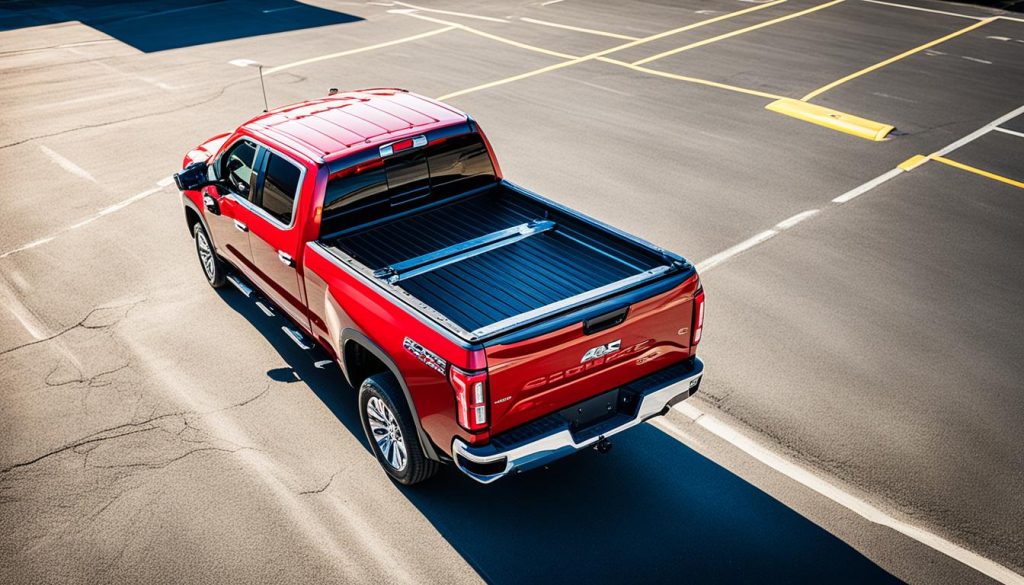
Intended Usage for the Highest Rated Receiver Hitches
Class 5 hitches are ontologically crafted for tasks that would easily intimidate lesser hitches. Whether it’s to facilitate the transport of colossal equipment haulers, navigate large trailers through sprawling construction sites, or simply meet the exhaustive demands of expansive agricultural enterprises, these hitches provide the essential muscle and durability. In essence, for any scenario where uncompromising strength is a non-negotiable requirement, the Class 5 hitch is the ultimate powerhouse solution.
Specialized Hitches Beyond Class 5
As the world of towing evolves with increasing demands for higher capacity and durability, the industry has responded with innovative solutions designed to handle the most rigorous conditions. Such is the case with the SuperHitch Original 20K and the SuperHitch Magnum, which transcend the conventional hitch classes to offer unparalleled strength for heavy-duty items.
Owners of the latest heavy-duty trucks now have options that match their vehicle’s robust capabilities, ensuring they can tow the heaviest trailers and RVs without a hitch—quite literally.
Emergence of SuperHitch Original and Magnum
The SuperHitch Original 20K is an impressive specimen in the towing world, designed to exceed the expectations set by traditional hitch classes. With a remarkable towing capability and a focus on security and efficiency, it’s built for serious haulers seeking reliability.
And then there’s the SuperHitch Magnum, a powerhouse that brings new meaning to heavy-duty towing. It’s not just about capacity—which can reach a staggering 30,000 lbs with weight distribution—it’s also about the peace of mind that comes with employing a hitch designed for the utmost in performance and safety.
Both the SuperHitch Original 20K and the Magnum are engineered to handle the toughest towing jobs, representing the latest in towing technology and resilience. They are the optimal choice for those who demand nothing but the strongest, most reliable hitch to secure their heavy cargo.
Avoiding Common Towing Mistakes
When it comes to towing, ensuring trailer hitch compatibility, prioritizing towing safety, and respecting your vehicle’s towing capacity are non-negotiable aspects. In this section, we delve into the essential steps every driver should take to avoid the pitfalls of improper towing, which can jeopardize both safety and vehicle integrity.
Ensuring Compatibility and Safety
One of the most common mistakes in towing arises from a mismatch between the trailer and the towing vehicle. To safeguard against these, always verify that your trailer hitch compatibility with your vehicle meets or exceeds the requirements of your trailer and its load. Adherence to industry standards not only ensures a smooth journey but is crucial for your safety and that of other road users.
Assessing Your Vehicle’s Towing Capabilities
It cannot be overstated that your towing setup should never surpass your vehicle’s established towing capacity. This is a critical factor in towing safety and avoiding undue strain on your vehicle. An overburdened vehicle can lead to compromised handling, increased wear and tear, and even mechanical failure. Consult your vehicle’s manual or manufacturer to determine the specific towing limits and ensure they align with the hitch and trailer in use.
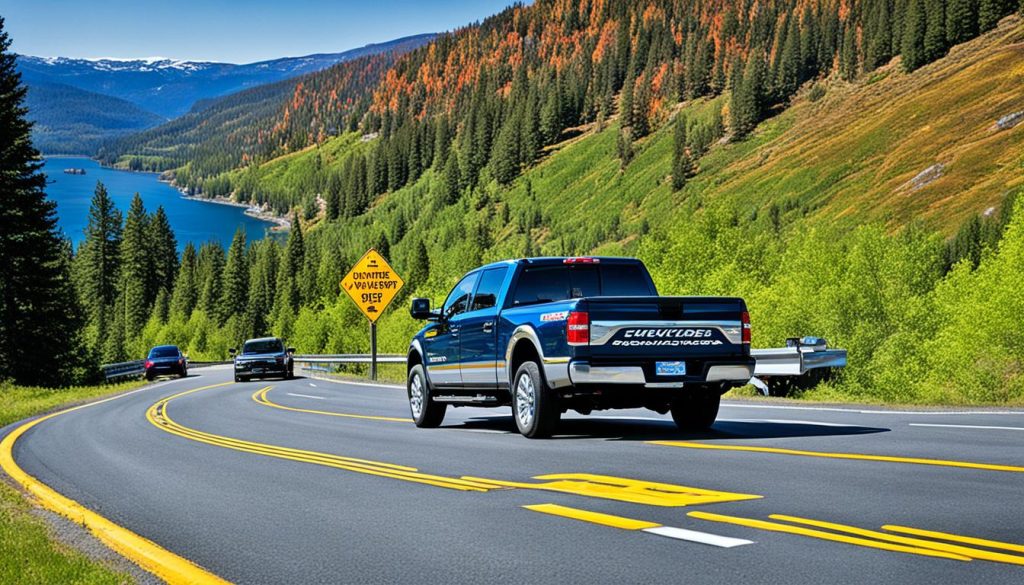
| Towing Component | Checklist for Compatibility and Safety |
|---|---|
| Hitch Type and Class | Match the hitch type and class with your vehicle’s specifications and the weight of the trailer. |
| Towing Capacity of Vehicle | Confirm that the total weight of the trailer does not exceed the vehicle’s towing limit. |
| Towing Equipment | Ensure all equipment, including hitch pins and clips, is intact and suited for your towing setup. |
| Safety Chains | Cross safety chains under the hitch to minimize the risk of the trailer detaching while in motion. |
| Braking System | Verify that the trailer’s brakes are compatible with and functioning in sync with the towing vehicle. |
Accessorizing Your Trailer Hitch for Optimal Use
Equipping your trailer hitch with the correct accessories is not merely about convenience; it’s about maximizing performance and safety. Whether you’re planning a weekend getaway with a camper in tow or hauling equipment for work, ensuring that you have the proper setup is key. A well-accessorized hitch can provide a seamless towing experience, making your journey more enjoyable and stress-free. By prioritizing the addition of essential hitch components, you elevate your towing capabilities to a new level.
Choosing the Right Hitch Accessories
Selecting accessories that perfectly complement your trailer hitch is an art that enhances your towing precision. Essential items such as the correct wiring harness ensure that your trailer lights synchronize with your vehicle, promoting safe signalling on the roads. Meanwhile, brake controllers are indispensable for managing stopping power, especially during descents or sudden halts. On top of functionality, tow mirrors extend your field of vision, allowing for better awareness of the trailer and adjacent traffic. These well-chosen accessories not only aid in adherence to legal requirements but also make a world of difference in safety and control.
Importance of Weight Distribution and Sway Control
For those embarking on towing heavy or large loads, understanding and applying weight distribution and sway control systems is paramount. These systems play a pivotal role in maintaining the stability of your vehicle-trailer setup. Proper weight distribution helps in evenly allocating the trailer load between the tow vehicle’s front and rear axles, resulting in improved steering and braking. Sway control devices work to minimize the side-to-side movement of the trailer caused by wind or sudden maneuvers, which could otherwise lead to loss of control. Integrating these accessories with your hitch setup not only ensures a smoother ride but significantly reduces the likelihood of accidents, keeping everyone on the road much safer. By consulting with towing professionals, you can ascertain that your weight distribution and sway control accessories are apt for your vehicle’s specifications and the demands of your load.



